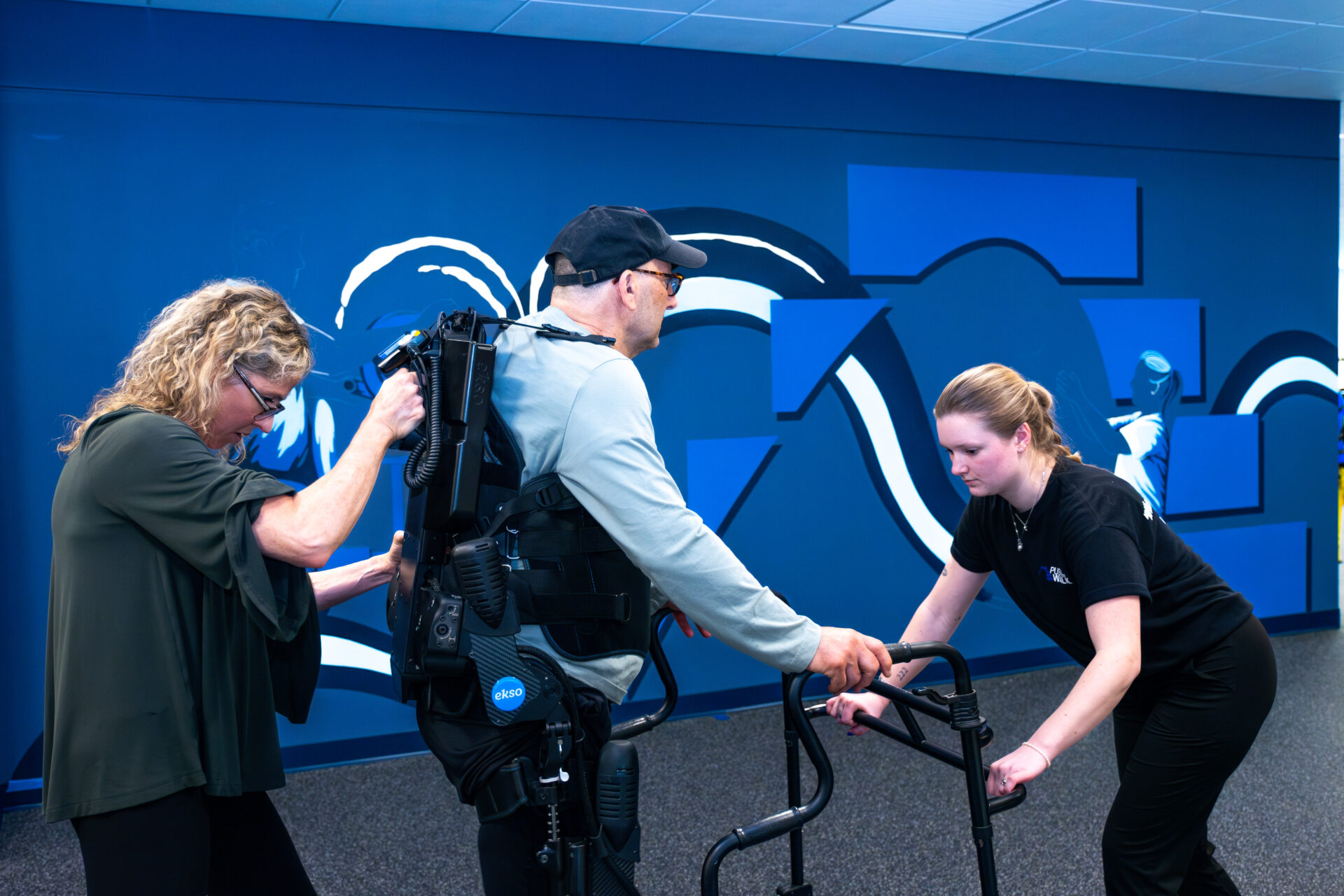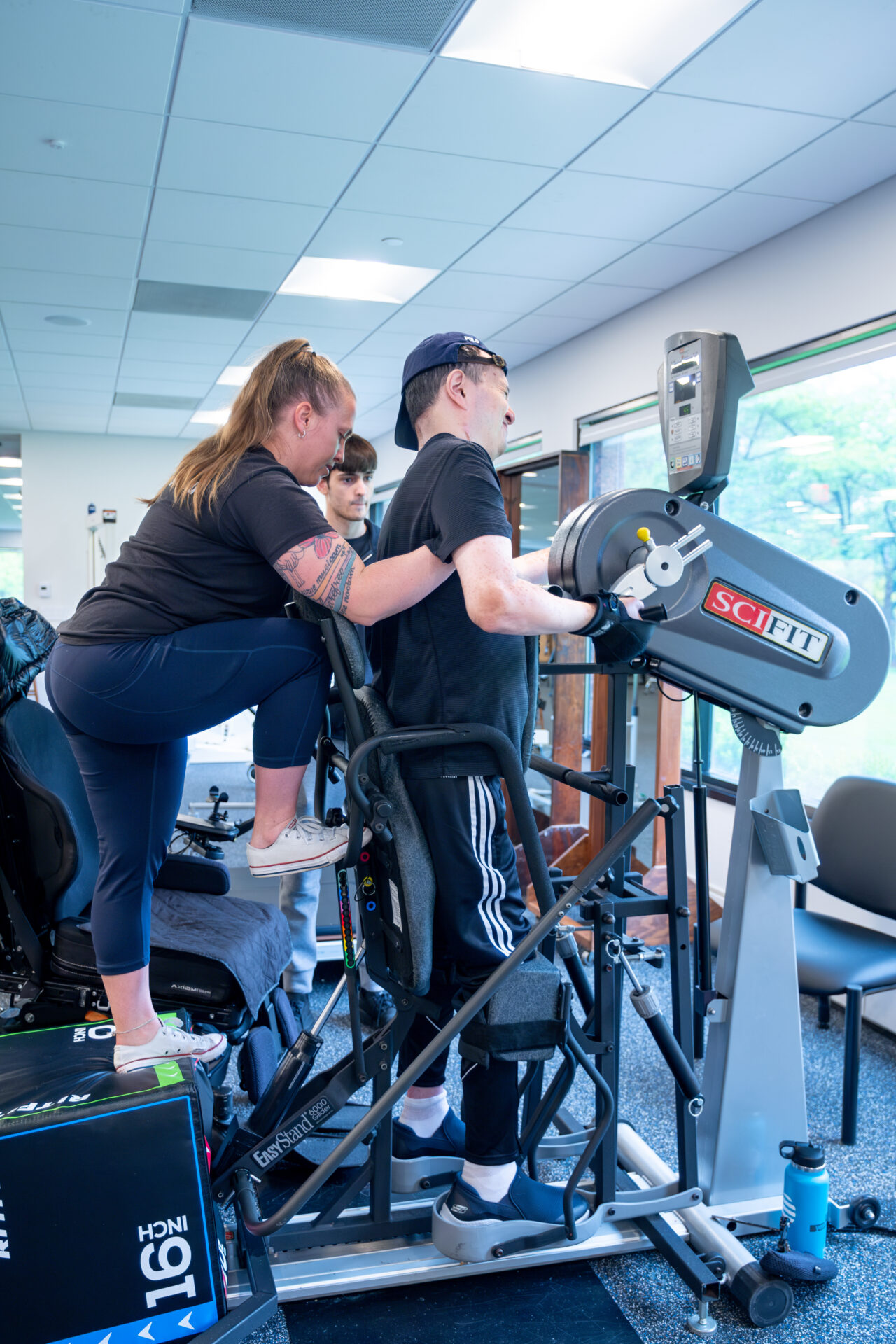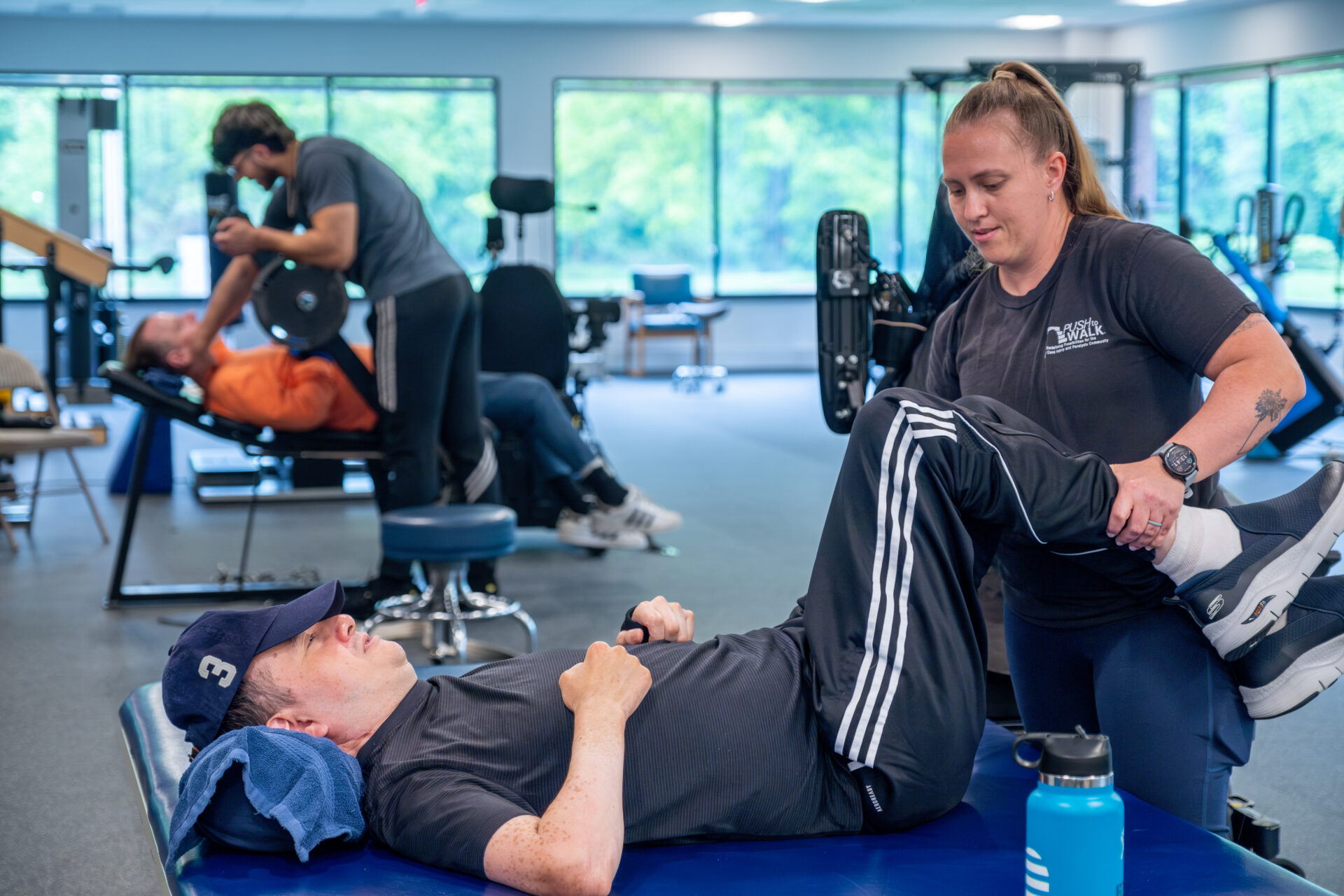Physical Fitness Training for Spinal Cord Injuries
Over 46% of Push to Walk’s (PTW) clients have a spinal cord injury.
Spinal cord injuries are caused when the spinal cord is bruised, torn or crushed. This is often the result of trauma to the vertebral column, although it can also be a result of a traumatic insult such as transverse myelitis or a spinal cord stroke. The additional neuronal damage is from the secondary trauma of swelling. Spinal cord injury can occur without obvious vertebral fractures and you can have spinal fractures without spinal cord injury.
There are approximately 12,500 new cases of SCI each year, with as many as 400,000 Americans currently living with spinal cord injuries. Most spinal cord injuries occur between the ages of 16 and 30, and about 82 percent of those who experience spinal cord injuries are male. In the United States, motor vehicle accidents account for approximately 44 percent of all spinal cord injuries.
Other common causes include:
- Acts of violence, including those involving knife and gunshot wounds
- Slips and falls
- Sports-related injuries, mostly diving accidents
- Trampoline accidents
What is a Spinal Cord Injury?
A spinal cord injury is defined by neurological level, as well as severity, and determines where function is lost. Generally, the functions of the body located above the point of injury will continue to work with no loss of function, while the areas of the body located below the point of injury will be impaired. Impairment can include motor deficit, sensory deficit, bowel/bladder dysfunction, and breathing difficulty.
Once a patient’s condition is stabilized, care and treatment focus on supportive care and rehabilitation strategies. Attention to supportive care can prevent many complications. The goals of rehabilitation are to minimize the person’s impairments, limitations in performance of activities, and restrictions for participation in various life areas.

Spinal Cord Injury Mobility Training
Following any kind of neurological impairment, the level of activity in the area affected by the impairment is usually severely reduced. There are so many barriers to getting exercise after you’ve had a spinal cord injury that it is easy to be discouraged or feel that it is impossible. Regular physical activity is important for staying healthy and feeling good, especially if you have an SCI. And while there are obvious challenges, it is still possible to exercise after SCI.
So in addition to reducing the risk for heart disease, research in the SCI population has shown that exercise improves respiration (breathing), muscle strength, circulation, body composition, self-esteem, self-confidence, depression, anxiety, and independence. It also helps to prevent secondary complications (such as urinary tract infections, pressure ulcers, and respiratory infections), reduce the risk for diabetes, improve immune system function, and reduce constipation.
Regardless of symptoms, at the most basic level, the trainer is looking for ways to target and excite the nervous system. Positional movements, load-bearing activities, active-assistive exercises, developmental movement patterns and so forth are all aimed toward eliciting a response from the damaged nervous system and re-educating the body to work the way it was designed.
Push To Walk’s Approach to Spinal Cord Exercise Training
In addition, PTW has FES equipment. FES stands for Functional Electrical Stimulation: a rehabilitation technique whereby electrical current stimulates nerves to evoke muscle contractions. FES replaces or enhances volitional movement to allow a neurologically impaired person to undertake progressive resistance exercise (PRE) for therapeutic outcomes. FES helps the muscles perform a patterned activity that the client may have lost or have impaired ability to perform voluntarily.
Clients who are good candidates for FES are those who present with upper motor neuron symptoms and have limited voluntary control of their muscles. There are many documented benefits of using FES cycling including relaxation of muscle spasms, prevention of disuse atrophy, increasing local blood circulation, and maintaining or increasing range of motion.
Push to Walk currently has seven units that administer FES: Empi Unit, RT300, RT200, RT600, Xcite, MOTOmed and MyoCylce, each of which is explained below. The “RT” devices made by Restorative Therapies combine dynamic motor support along with internet connectivity to monitor progress and update settings appropriately.


